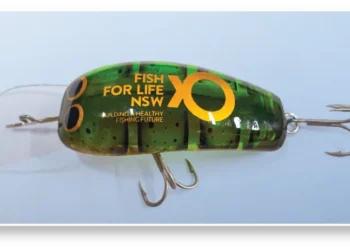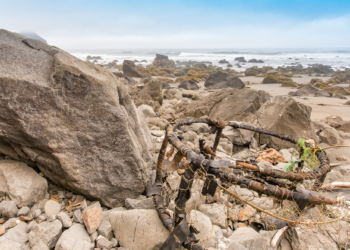
THE more you look at size and bag limits as appropriate management tools the more questions pop up. Consider two popular East Coast sportfish, the luderick and the rock blackfish. They’re close relatives, both Girella species, but their issues couldn’t be more different. Yet the recreational management measures are very similar in NSW. The luderick has a bag limit of 10 and a minimum size limit of 27cm, while the rock blackfish has 10 and 30cm. But that’s about where the similarities end.
The luderick has been quite heavily fished historically both commercially and recreationally, mainly in NSW but also a bit in Queensland and Victoria. But from 2006 and 2016 the recreational take is estimated to have dropped by 50 percent, probably because the style of fishing (bait/float) is out of fashion with younger anglers and is carried on mainly by veterans (like me) and ISO specialists. The creation of Recreational Fishing Havens and commercial buy outs has also led to much reduced commercial landings. So, there are plenty of luderick about. They can live for up to 24 years and get to 56cm, hitting sexual maturity at 28–30cm. Now if size limits are designed to give 50 percent of females a chance to breed at least once, NSW’s size limit is a bit low, Victoria’s 23cm is more than a bit, and Queensland’s 30cm is about right. Each state has a 10 fish limit, although Queensland’s is possession rather than bag.
The rock blackfish is not targeted commercially and never appears in fish markets these days. Back in the 1960’s the size limit was only 20cm, probably because so few big fish could be landed on the tackle of that era. Modern rods and lines changed all that, and researchers realised that their old maximum size estimate of 4kg was about 100 percent too low. Fish of between 5 and 9kg were suddenly being landed. But what we didn’t know, and only found out recently, was that these big fish of around 60cm and up could be 45 years old. Worse still, it seems females don’t hit sexual maturity until between 39 and 42cm. That makes the 30cm minimum size look pretty arbitrary, and the 10 fish limit high.
So, what do you do with the rock blackfish? Lift the size limit to 42cm? Well, maybe not.
As Jerom Stocks pointed out in his 2015 PhD thesis on the ecology of rock blackfish, this could lead to an increased take of the big old breeding females and a reduction in the number of smaller males currently kept as part of the bag limit. Unluckily for them, even very big rock blackfish taste exceptionally good.
So, for the two subjects of this article the solutions might be quite different. For instance, on what we currently know about stock sustainability, luderick should perhaps have a uniform Australia-wide 30cm minimum size limit but upping the bag limit a bit probably wouldn’t be a threat.
With the rock blackfish, where the sustainability status is unknown or questionable, a slot limit designed to protect the big breeders might be better. Say allow 5 fish to be kept between 30 and 40cm? Otherwise the possibility is that the rock blackfish might go the way of its other Girella cousin the blue drummer (bluefish), once so common in NSW that Bluefish Point near Manly was named after it, but now hardly ever seen other than at Norfolk and Lord Howe Islands.
















